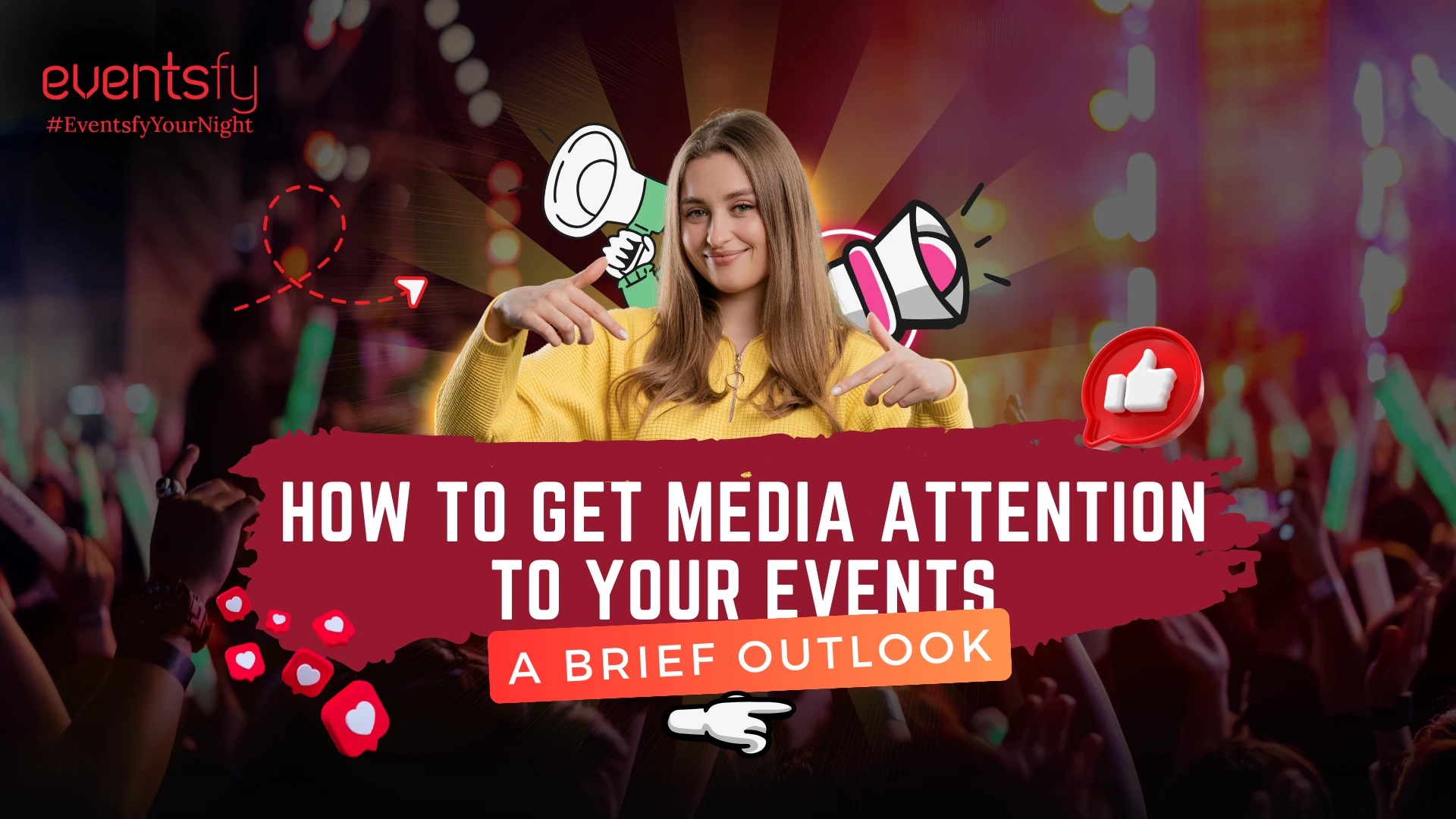By - Gaurav Verma
Featured Events
Jan 10, 2025
How To Get Media Attention To Your Events: A Brief Handbook
In today’s world, the difference between a sold-out experience and a missed opportunity can depend solely on the type of attention received for your events. Be it a conference, a concert, a product launch, or just a community event, it often depends on how you can capture the media’s attention. Media coverage helps your event gain visibility among people but also credibility. So how will you ensure your event is not buried with the pile of other ones? In this blog post, we set out some actionable steps that have helped you capture the media buzz your event rightly deserves. Let us take you along on a voyage of press releases, media outreach, and creative tactics and strategies that shall make your events the talk of the town.
Strategies To Get Media Attention To Your Events
- Identify the relevant media outlets
Start by identifying outlets that align with the theme of your event. Research niche publications, industry-specific blogs, and websites that have earlier covered similar topics. Such platforms are always keen to delve into events within their niche and thus are the perfect place to start. Focusing on outlets that are already connected to your industry maximizes the chances of finding an audience that genuinely cares about the subject of your event.
- Leverage Local Media for Wider Reach
Local media can be a game-changer for event coverage. Newspapers, magazines, and online platforms in your area are always looking for interesting stories. Pitching your event as a significant local happening positions you as a key contributor to the community. This is likely to interest them and feature your event in a prominent light.
Highlight how your event benefits the local community. Whether it’s creating networking opportunities, supporting local businesses, or showing regional talent, be sure to highlight the local relevance. Positioning your event as a community-focused activity both expands your audience and builds goodwill, which can make the event more appealing to local media outlets.
- Timing Is Everything for Media Outreach
Timing is everything when it comes to securing media coverage for your event. Start your outreach efforts at least a month before the event. For print publications, which often work with longer lead times, consider sending press releases even earlier. Early communication allows journalists to plan their coverage and ensures your event fits into their schedules.
Pre-event buzz is more probable with timely outreach. Once your event has captured the journalist’s attention early enough, he can introduce your event well in advance by previewing it in his own content. These additional impressions then create the energy and draw that will eventually yield a successful show.
- Offer privileged access to journalists.
Offer exclusive access to your event. This is one of the best ways to attract journalists. Provide them with press passes that give entry to key highlights and behind-the-scenes activities. The more convenient it is for journalists to cover your event, the more likely they are to do it thoroughly and enthusiastically.
However, be strategic in distributing the press passes. Focus on the key media contacts who are most likely to produce impactful stories. A good experience for journalists at your event will not only guarantee quality coverage but also lay the groundwork for successful future media partnerships.
- Add real-time engagement tools
Incorporate real-time engagement tools to make your event more interactive and media-friendly. Through big screens, keep the buzz alive by displaying live updates, attendee posts, and hashtags from the event. These tools can make your event look more visually appealing and shareable and get people talking about it on social media both amongst the attendees and the media.
Hashtags are very important in increasing your event’s digital footprint. It is easy to encourage attendees to use a specific hashtag for their posts, and journalists can track them easily and include them in their stories. Real-time engagement not only makes your event participative but also innovative and media-savvy.
- Build Strong Relationships
Building relationships with journalists doesn’t have to be left at an event. Follow through on the ones who covered your event for additional thanks or resource provision. For instance, delivering photos in very good resolution and clips of footage, among other things, shows your gratitude and, hence, professionalism, in addition to always keeping a lookout for an event.
This can improve your chances of media coverage of future events. Journalists like to work with people who are reliable and communicate smoothly. So try to nurture such relationships. Over time, these relationships become an asset for your consistent coverage of events in the media.
- Create Engaging Event Content
To capture media attention, one should create content that tells the story of an event. This includes developing a compelling press release that brings out the uniqueness of the event, such as keynote speakers, innovative elements, or the impact it will have on the industry or community. A strong narrative makes it easier for journalists to understand why your event is newsworthy and worth covering.
Apart from press releases, high-quality visual elements like good photos, videos, and infographics should be prepared. They make your event look more appealing and ready-to-use material for the media. If you give a complete media kit that has engaging content, you are making it easy for journalists to feature your event, increasing the chances of getting widespread coverage.




